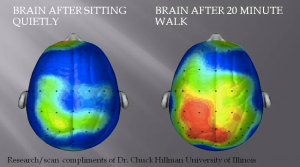Dancers come in all forms and from all walks of life.
As someone who enjoys a wide variety of activities from artistic and cultural, nightlife to the outdoors, and the intellectually stimulating to the death-defying extreme, I constantly meet a broad spectrum of different types of people. Out of all these different activities I’ve been a part of, I have to say that I’ve probably met some of the most diverse individuals while out dancing. Even here at ATOMIC I’ve met people from different parts of the world, including students, retirees and working professionals of all kinds.
The demographics of dance
I’ve come to know a handful of scientists, professors, entrepreneurs and bright professionals of all types while out dancing, and in particular here at ATOMIC. As much as I love to dance ’till I drop, I also enjoy socializing along the sidelines with the fascinating array of patrons who frequent this space. With such a broad cross-section of individuals who come from both near and far, I’ve found myself deep in conversation about most every topic you could imagine. So it is no surprise that dance itself is a popular topic amongst many in the ballroom.
I fondly recall dancing salsa with a young man who (in the middle of a song) kept stopping to ask questions and try to figure out certain movement patterns that he was struggling with. Although this might bother some people, I didn’t mind and actually found it endearing that he was willing to reveal his lack of experience, and was also quite eager to learn. When another young man approached us and joined our conversation, I was truly tickled as I watched the two young scientist turned dancers logically analyze every nuance of footwork and patterns, as if they were chemistry problems in a lab to be solved. Although most people think of dance as an art form, and approach it as such, it is interesting to watch intellectuals apply problem-solving techniques from their professional world to the dance floor.
Train your brain
 This is your brain (left). This is your brain ‘on dance’ (right). Any questions?
This is your brain (left). This is your brain ‘on dance’ (right). Any questions?
As we age remembering simple things can become more challenging, in part due to changes in the brain that occur over time. As frightening of a thought as this is, the good news is that we can slow down this process by exercising our brains. When we learn new things, neurons in our brains are stimulated and create new pathways that act as information highways.
The more difficult the subject, the greater the need becomes for more neural pathways to be created. Since dancing combines multiple brain functions at once, it is an extremely effective way to aid learning and memory.
Freestyle social dancing forces both leaders and followers to make continuous split second decisions that stimulate brain activity. This brain activity, particularly learning, has been shown to be enhanced by dancing with different partners, which forces each person to have to constantly adapt and be aware of more variables.
This image of two brain scans clearly shows a difference in neurological activity from the brain at rest on the left to the brain on the right that has just finished a 20-minute walk. Now imagine how much more this colorful neurological activity increases after dancing!
Use it or lose it
When it comes to memory and dance, this famous line couldn’t be any truer. Just as in our day-to-day lives, when we don’t use something we’ve learned, we may eventually lose it. So the lesson in all of this is to be smart by continually learning, keeping active and of course combining these ideas and dance, dance, dance!
